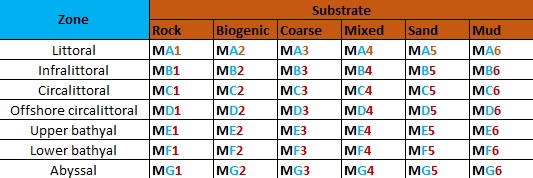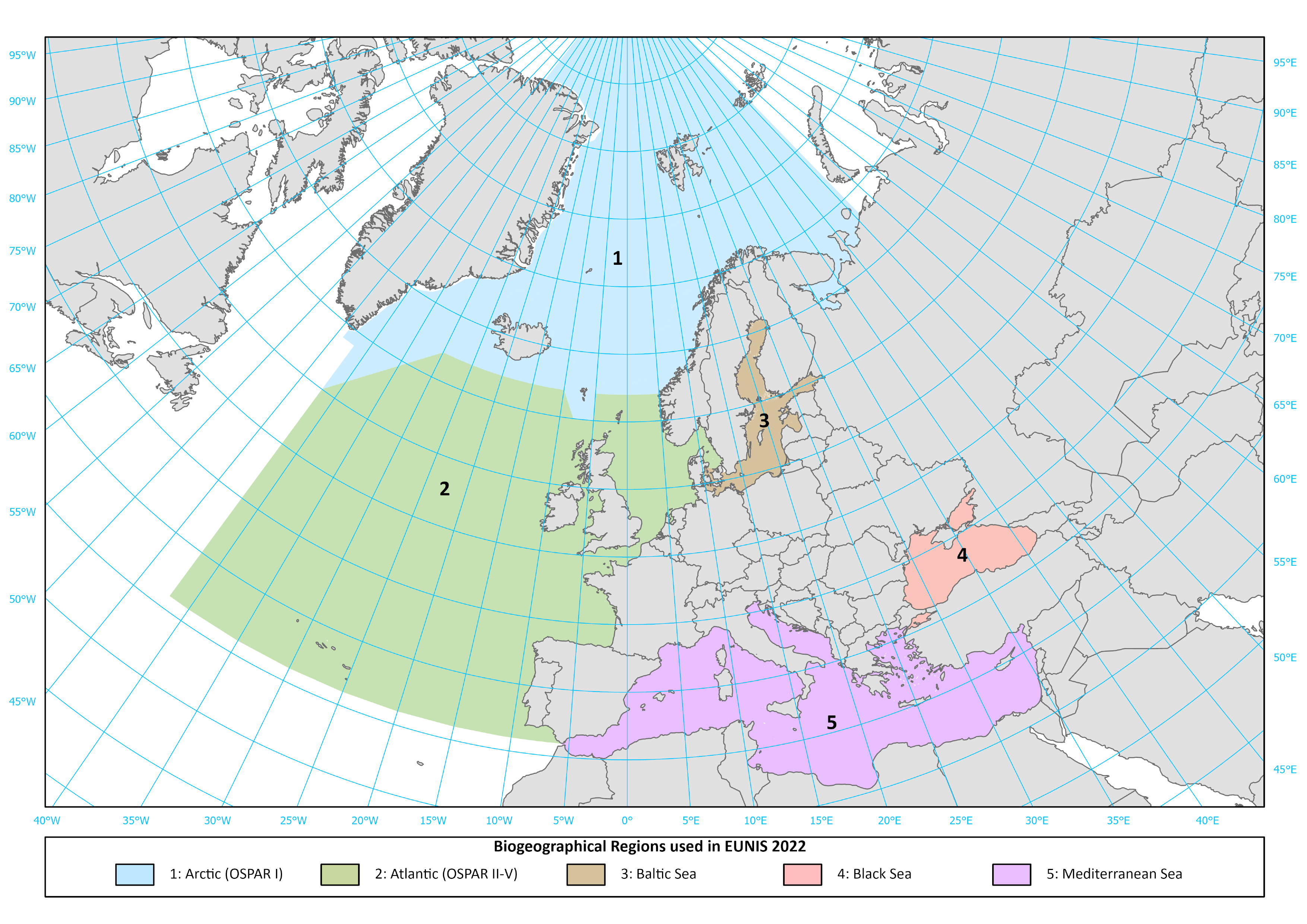The EUNIS habitat classification is a comprehensive pan-European system for habitat identification. The classification is hierarchical and covers all types of habitats from natural to artificial, from terrestrial to freshwater and marine. The habitat types are identified by specific codes, names and descriptions and come with cross-walks to other habitat typologies.
EUNIS 2022
The marine component of the EUNIS habitat classification has undergone a major restructuring. EUNIS 2022, as it is known, is composed of 6 hierarchical levels. The first three levels describe the habitats (i.e. the abiotic part) while the last three describe the biotopes (i.e. habitats and benthic communities that occupy them).
Hierarchical structure
- Marine benthic habitats, marine pelagic and marine ice associated habitats are separated into three distinct groups, each with a separate classification structure (Level 1).
- The first major division (Level 2) in the benthic marine part of the EUNIS classification is based on major biological zones (related to depth) and substrate type.

- Level 3 of the classification reflects the main biogeographical regions of Europe’s seas based on their distinct combinations of salinity and temperature regimes (Arctic, Atlantic, Baltic, Black Sea and Mediterranean).
- Level 4 introduces a broad classification of the biological community present. Level 5 names the dominant species present and Level 6 names the distinguishing species.
Improvements on previous versions
• Biogenic substrate now has its own overarching Level 2 habitat. In previous versions, sublittoral biogenic habitats were classed under sublittoral sediment.
• Rock is no longer split into high, medium or low energy classes at level 3. Energy regimes are included in levels 4, 5 and 6 along with the biology.
• Biology is introduced at level 4 across all substrate types.
• The classification includes crosswalks to Habitats Directive Annex I and to European Red List of Habitats.
• Level 3 can be translated directly into the MSFD benthic Broad Habitat Types classification.
Earlier drafts
A first review was published in 2019 and an update to this version, concerning mostly the Atlantic regional sea, is available since March 2022. Users should change to the 2022 version at their earliest convenience.

